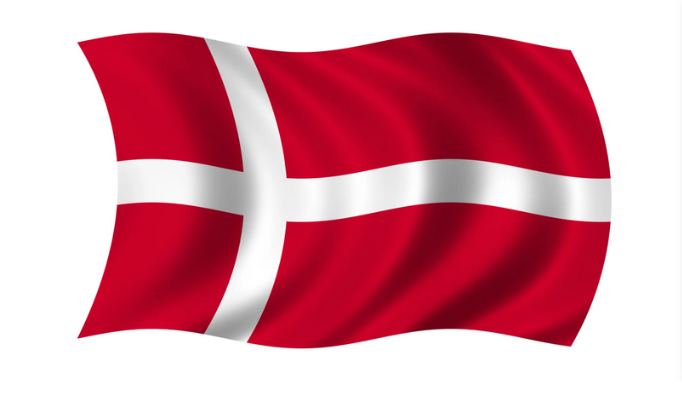Are you planning a trip to Denmark but wondering how to go about getting a visa? Don’t worry, you’re in the right place!
If you’re from a country that needs a visa to visit Denmark, you will likely need what’s called a Danish Schengen Visa. It might sound like a big process, but we will be here to walk you through everything step by step.
Maybe you’re visiting Denmark for a short holiday, business trip, or to see family and friends, whichever one it is, this guide will help you apply for your visa with confidence.
Keep reading to get all the details.
What is a Danish Schengen Visa?
A Danish Schengen Visa is a short-term visa that allows you to visit Denmark and other countries in the Schengen Area for up to 90 days within a 180-day period.
What is the Schengen Area?
The Schengen Area is a group of European countries that have removed passport checks at their borders. This means if you enter one Schengen country, you can move around to others without needing a separate visa.
Some of the countries in the Schengen Zone include:
- Denmark
- France
- Germany
- Italy
- Netherlands
- Spain
- Sweden
- Norway
- And many more (total of 27 countries)
So if you get a visa to Denmark, you can also travel to these other countries during your trip, without applying for another visa.
What Can You Do With a Danish Schengen Visa?
This visa is perfect if you want to:
- Visit Denmark for tourism (sightseeing, vacation, honeymoon, etc.)
- Attend a business meeting or conference
- Visit family or friends who live in Denmark
- Participate in a short cultural or sports event
- Get medical treatment in Denmark
- Take a short course or study program (less than 90 days)
Important Note: A Danish Schengen Visa is a short-stay visa, not a work or long-term residence visa. If you want to work or live in Denmark for a long time, you’ll need a different kind of visa or residence permit.
Who Needs a Danish Schengen Visa?
Not everyone needs a visa to enter Denmark. It all depends on the country you’re from and how long you plan to stay.
You Need a Danish Schengen Visa If:
- You are from a non-EU/non-Schengen country that does not have a visa-free agreement with Denmark or the Schengen Area.
- You plan to stay in Denmark or the Schengen Area for up to 90 days (in any 180-day period).
- You’re not a citizen of a country whose passport allows visa-free travel to Denmark.
Examples of countries that usually need a visa:
- India
- Pakistan
- Nigeria
- Ghana
- Kenya
- Bangladesh
- Philippines
- South Africa
Tip: To check if you need a visa, visit the Danish embassy website in your country or use the Schengen Visa Checker tool on the official Denmark immigration site.
You Don’t Need a Danish Schengen Visa If:
- You are from a Schengen country or an EU/EEA country.
- You are from a country that has a visa-free agreement with the Schengen Area, such as:
- USA
- UK
- Canada
- Australia
- Japan
- South Korea
However, if you plan to stay longer than 90 days, even people from visa-free countries will need a long-stay visa or residence permit. If you’re traveling with your family or group, each person (even children) must have their own visa but you can apply together as a group to make the process easier.
Types of Danish Schengen Visas
When applying for a Danish Schengen Visa, it’s important to choose the right type of visa based on your reason for visiting. The Danish authorities want to know exactly why you’re coming and how long you plan to stay.
1. Tourist Visa
This is the most common type of Danish Schengen Visa. You should apply for this if you’re coming to Denmark for:
- Vacation or sightseeing
- Visiting tourist attractions like The Little Mermaid statue, Tivoli Gardens, or Nyhavn
- Relaxing with family or friends
This visa allows you to stay for up to 90 days and travel freely within other Schengen countries too.
2. Business Visa
Apply for this if your trip is related to:
- Business meetings or conferences
- Signing contracts
- Exploring business partnerships
- Attending trade fairs or seminars
You’ll need an invitation letter from the company or organization in Denmark.
3. Family or Friends Visit Visa
This visa is for people who are invited to visit:
- Their spouse, relatives, or close friends
- Someone they have a personal connection with who lives in Denmark
You will need a formal invitation letter from the person you’re visiting.
4. Medical Visa
If you need to get treatment or surgery in Denmark, this is the right visa. You must show:
- A letter from the hospital or clinic in Denmark
- Proof of medical appointment
- Proof you can pay for the treatment
5. Cultural, Sports, or Religious Events Visa
This one’s for you if you’re coming to:
- Perform in a cultural show
- Play in a sports competition
- Attend a religious gathering
You will need documents showing your role in the event and the event’s details.
6. Short Study or Training Visa
This visa is for short programs such as:
- Language courses
- Summer schools
- Training workshops
Your course must be less than 90 days.
Important: Each visa type has slightly different documents you must submit. Choosing the correct category is one of the most important steps when applying.
Where to Apply for a Danish Schengen Visa
Now that you know what type of visa you need, the next step is knowing where and how to apply. This step is very important because applying at the wrong place can cause delays or even rejection.
Step 1: Find the Right Danish Embassy or Visa Center
You need to apply at the Danish embassy, consulate, or an authorized visa application center in your country.
But here’s a trick to remember:
If there is no Danish embassy in your country, Denmark may be represented by another country’s embassy. For example, the Norwegian or Swedish embassy might handle Danish visa applications on Denmark’s behalf.
To find the correct location:
- Visit the official Denmark Ministry of Foreign Affairs website
- Search for Danish embassies and consulates
- Or contact the nearest VFS Global center (many countries use VFS to process visa applications for Denmark)
Step 2: Book an Appointment
Once you’ve found the right embassy or visa center:
- Go to their website
- Book an appointment online (this is required)
- Some centers allow you to walk in, but it’s safer and faster to schedule your visit
You’ll choose a date and time to:
- Submit your application
- Provide your documents
- Give biometric data (fingerprints and photo)
Apply early! You can apply up to 6 months before your trip, but at least 15 working days before you travel.
Step 3: Go in Person
Yes, you must go in person to submit your application and fingerprints — this is mandatory unless you already gave fingerprints for a Schengen visa in the last 59 months (about 5 years).
Always double-check the address and appointment rules before your visit. Some locations are very strict with timing and paperwork.
Required Documents for a Danish Schengen Visa
This is one of the most important parts of your visa application. If even one document is missing or incorrect, your visa can be delayed or rejected.
- Completed Visa Application Form
- Valid Passport (valid for at least 3 months after the date you plan to leave denmark)
- Two Recent Passport-Size Photos
- Travel Itinerary (you can just show reservations)
- Proof of Accommodation
- Travel Insurance (at least 30,000 EUR)
- Proof of Financial Means
- Cover Letter explaining the purpose of your visit, how long you plan to stay and how you will fund the trip.
- Proof of Ties to Home Country (Work letter, family ties, property documents)
For Minors (Children Under 18)
- Birth certificate
- Consent letter signed by both parents
- Copies of parents’ passports
- If one parent is not traveling, a notarized permission letter is required
Note: Depending on your situation and visa type, the embassy might ask for additional documents. Always check with the specific Danish embassy in your country.
How to Apply for a Danish Schengen Visa
Now that you know the visa types and have your documents ready, let’s walk through the steps you need to follow to apply successfully:
Step 1: Choose the Right Visa Type
Before anything, make sure you choose the correct visa type based on your reason for travel (tourism, business, family visit, etc.).
The type you choose will decide the documents you need and the questions you’ll be asked.
Step 2: Gather All Required Documents
As we discussed earlier, collect:
- Passport
- Photos
- Travel plan
- Insurance
- Bank statements
- Cover letter, and more
Put them in a folder and arrange them neatly in the order listed on the embassy’s website.
Step 3: Book an Appointment
- Visit the website of the Danish embassy, VFS Global, or authorized visa center.
- Find the appointment section and choose a date and time.
- You’ll receive a confirmation email which you will have to print.
Step 4: Fill Out the Visa Application Form
- Fill out the form online or print and complete the paper form (depends on your country).
- Answer all questions truthfully.
- Use block letters if filling by hand.
- Sign and date the form.
Step 5: Attend Your Appointment
On the appointment day:
- Arrive at least 15–30 minutes early.
- Bring all your documents in the correct order.
- Submit your biometrics (fingerprints and photo).
- Pay the visa fee (usually around €80 for adults, €40 for children 6–12, and free for kids under 6).
Step 6: Wait for Processing
- Visa processing usually takes 15 working days.
- It could be longer if more documents are requested or during busy seasons.
- You can track your application online using a reference number given at the visa center.
Step 7: Collect Your Passport
- Once your visa is ready, you’ll receive a notification (SMS or email).
- You can either pick it up in person or choose courier delivery if available.
Check your visa sticker to make sure all details (name, dates, number of entries) are correct.
What Happens After You Apply for the Danish Schengen Visa?
Once you’ve submitted your application, you might wonder, “What’s next? How do I know what’s going on with my visa?” Let’s discuss all of that:.
1. Your Application Is Registered
After you hand in your documents (in person or via a visa center), your application is officially registered. This means it enters the embassy’s system and gets a unique number. This number lets you track your application status online in many countries.
2. Biometrics Collection
If it’s your first time applying for a Schengen visa or it’s been more than 59 months since your last application, you’ll need to give your biometric data:
- This includes your fingerprints and a digital photo.
- It helps make the process faster and more secure.
- Biometrics are usually collected at the visa application center during your appointment.
-
Application Review and Verification
The embassy or consulate staff will carefully check all your documents. They will look at:
- Your passport and photos
- Your travel plan and accommodation bookings
- Proof of financial means and travel insurance
- Your ties to your home country
They want to be sure everything is true and that you meet the visa requirements.
4. Possible Interview or Additional Information
Sometimes, the embassy may ask you to attend a short interview or provide extra documents. They might want to know more about your trip or check some details.
-
Decision Making
After reviewing everything, the embassy will make a decision. Usually, this takes around 15 calendar days, but it can be faster or slower depending on your case and time of year.
-
Notification
Once the decision is made, you’ll be notified. If you applied through a visa center, you might get:
- An SMS or email alert
- A message on the visa center website
- A phone call (rarely)
If you applied directly at the embassy, they’ll inform you about how to collect your passport.
-
Collecting Your Passport
You’ll pick up your passport with either:
- Your Danish Schengen visa sticker inside if approved
- Or your passport without visa if denied, along with a rejection letter explaining why
Remember, if your visa is refused, you have the right to appeal or reapply.
-
Check Your Visa Carefully
If approved, before you leave the visa center or embassy, check:
- Your name is spelled correctly
- The visa dates match your travel plans
- The number of entries (single, double, multiple) is what you requested
What If Your Visa Is Delayed or Denied?
If your visa decision takes longer than 15 days, don’t panic. Sometimes, extra checks take more time. If it’s very delayed, you can contact the embassy or visa center for an update.
If your visa is denied, carefully read the reasons given. You can usually:
- Fix the issues and reapply
- Appeal the decision within a certain timeframe (usually 4 weeks)
Frequently Asked Questions (FAQs)
-
What is a Danish Schengen Visa?
It’s a short-term visa to visit Denmark and other Schengen countries for up to 90 days.
-
How long can I stay in Denmark with this visa?
You can stay for up to 90 days in any 180-day period.
-
Can I travel to other Schengen countries with this visa?
Yes, you can visit all Schengen countries during your visa’s valid period.
-
How early can I apply?
You can apply up to 6 months before your trip, but at least 4 weeks early is best.
-
What documents do I need?
Passport, application form, photos, travel plan, insurance, proof of money, and ties to home country.
-
How long does the visa process take?
Usually about 15 days, but sometimes longer.
-
What if my visa is rejected?
You can check the reason, fix any problems, and try applying again or appeal.
-
Do I need travel insurance?
Yes, it’s required and must cover at least €30,000 for medical emergencies.
-
What is biometric data?
It’s your fingerprints and photo, which you usually give during your first application.
-
Can I work or study with this visa?
No. You need a special visa for work or study.
-
How do I track my visa application?
You can check online if you applied through a visa center using your application number.
Conclusion
Applying for a Danish Schengen Visa might seem a bit tricky at first, but if you follow the steps carefully, it becomes much easier. Remember to prepare all your documents well, apply on time, and be honest in your application. After you apply, stay patient while the embassy processes your request, and don’t hesitate to ask for help if you need it.
With this visa, you get a wonderful chance to explore Denmark and many other beautiful Schengen countries. Just be sure to respect the rules and enjoy your trip!
Safe travels and have a fantastic adventure in Denmark!






